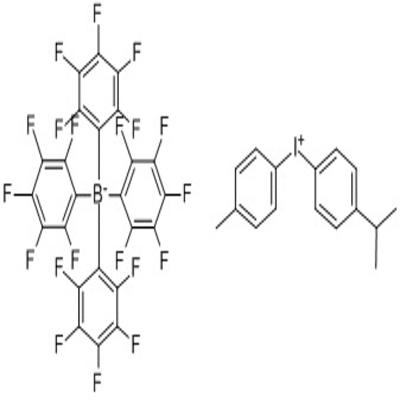-
Categories
-
Pharmaceutical Intermediates
-
Active Pharmaceutical Ingredients
-
Food Additives
- Industrial Coatings
- Agrochemicals
- Dyes and Pigments
- Surfactant
- Flavors and Fragrances
- Chemical Reagents
- Catalyst and Auxiliary
- Natural Products
- Inorganic Chemistry
-
Organic Chemistry
-
Biochemical Engineering
- Analytical Chemistry
- Cosmetic Ingredient
-
Pharmaceutical Intermediates
Promotion
ECHEMI Mall
Wholesale
Weekly Price
Exhibition
News
-
Trade Service
If DRG's challenge to private healthcare is focused on the impact on inefficient and low-value businesses, then the challenge of DIP point method to private healthcare is mainly focused on its own business scale.
, DIP's short-term impact on private medical care is greater than DRG's, and will be directly related to its own survival.
, the DIP point method is still slightly extensive in fine management, but the basic principle is the same as DRG.
will continue to put pressure on private medical institutions in the five areas of service efficiency, cost transfer, case transfer, effectiveness and income structure, thus forcing them to transform.
, the DIP point method still has its own characteristics, and these characteristics of the challenge to private hospitals more directly.
first, the DIP model classifyes diseases primarily by regional totals and big data-based methods, and no longer sets totals for individual hospitals, but sets up a regional total.
health insurance fund does not break down into hospitals, medical institutions can not predict how much reimbursement they can receive.
the floating point method, a large amount of service does not mean that it can earn more revenue, because the value of points changes every year.
increase in health insurance coverage is limited, but the increase in services is faster, which leads to a de facto decline in the real value of points, which in the early stages triggers further expansion of services in health care facilities.
because large public hospitals have high-quality medical resources, including quality doctors and state-of-the-art equipment and improved quality control, this in itself has attracted a large number of patients to hospital.
third-tier hospitals grew by 12.55 percent, 9.24 percent, 10.67 percent and 12.82 percent, respectively, in 2016-2019, and the proportion of hospitalizations in all medical institutions, including the primary, increased from 32.44 percent in 2015 to 39.42 percent in 2019.
Because under the floating-point method, all hospitals will expand their services, and private medical institutions, which are mainly primary hospitals, are obviously weaker than public third-tier hospitals in competing for patients, which will also lead to a further concentration of patients in high-quality public hospitals.
in this process, health care resources will also be transferred from private hospitals to the public.
by no longer setting separate totals, more service-capable hospitals will be able to access more users and expand their own coverage, which would have been further reduced by those with excess coverage.
, of course, the high cost of large hospitals, which can lead to losses in the field of simple surgery, is an opportunity for private medical institutions that are good at controlling costs.
however, in order to expand the volume of services, large hospitals also have the incentive to control costs, once its effective cost control, the same can continue to expand the volume of services in the field of simple surgery, which is mainly small and medium-sized hospitals in private hospitals can not be compared.
, in the face of the possible reduction in the volume of services, if the unit price of services to be reduced, this is certainly worse for private hospitals.
limited increase in health insurance coverage, expanding the volume of services will inevitably lead to a decline in the unit price of medical services.
In the battle for patients in the downwind, it will bring their own revenue and profits will bring a significant double-down process, especially overlay collection on drugs and supplies price impact, private hospital revenue will be significantly squeezed.
because private hospitals mainly rely on drugs and consumables to profit, with these two more and more products into the collection, private hospitals in its own difficult to obtain profits.
if revenue is further reduced under the points method, its future growth will face greater challenges.
Although the DIP point method is more similar to pay-per-project, after all, limits have been set for each disease, and private hospitals will have a hard time getting revenue by relying on long stays and increased service items.
average length of hospital stay in China in 2017 was 9.3 days, down 1.2 days from 10.5 days in 2010.
public hospitals between the two countries 9.4 days, down 1.3 days from 2010, and private hospitals 8.7 days, an increase of 0.3 days from 2010, especially after 2015.
Because 74% of private hospitals are first-class hospitals and 75% of public hospitals are second- and third-level hospitals, the overall criticality of private hospitals in hospital admissions is significantly lower than that of public hospitals, but the length of hospital stays in private hospitals is close to public hospitals and continues to rise in the case of shorter hospital stays in large environments, which shows that the efficiency of inpatient services is not economical.
cases are low-cost but long-term hospital stays, indicating that private hospitals are not treating complex cases, more through longer hospitalization to profit.
the average annual growth rate of 5% in 2010-2017 for all hospitals and 9,563 yuan for public hospitals, with an average annual growth rate of 6%.
it can be inferred that the hospitalization cost of private hospitals is lower than that of public hospitals, and the average annual growth rate is lower than that of public hospitals.
Although the number of non-public health care institutions has grown rapidly, the average annual growth rate of hospitalizations has been double-digit since 2016, with growth rates of 16.93 percent, 19.25 percent and 10.70 percent in 2016, 2017 and 2018, respectively.
but there was a clear decline in hospitalization growth into 2019, turning negative to -0.74 per cent.
main reasons for this are the relatively flat growth in average single-agency services and revenue over the past five years, the lack of enhanced service capacity of individual institutions in private hospitals, and a marked decline in challenges.
refore, with the promotion of DIP point method, the challenge of private hospitals is unprecedented, the development must change the original business model, from the weight of quantitative development to focus on quality development, in order to long-term survival and development.







